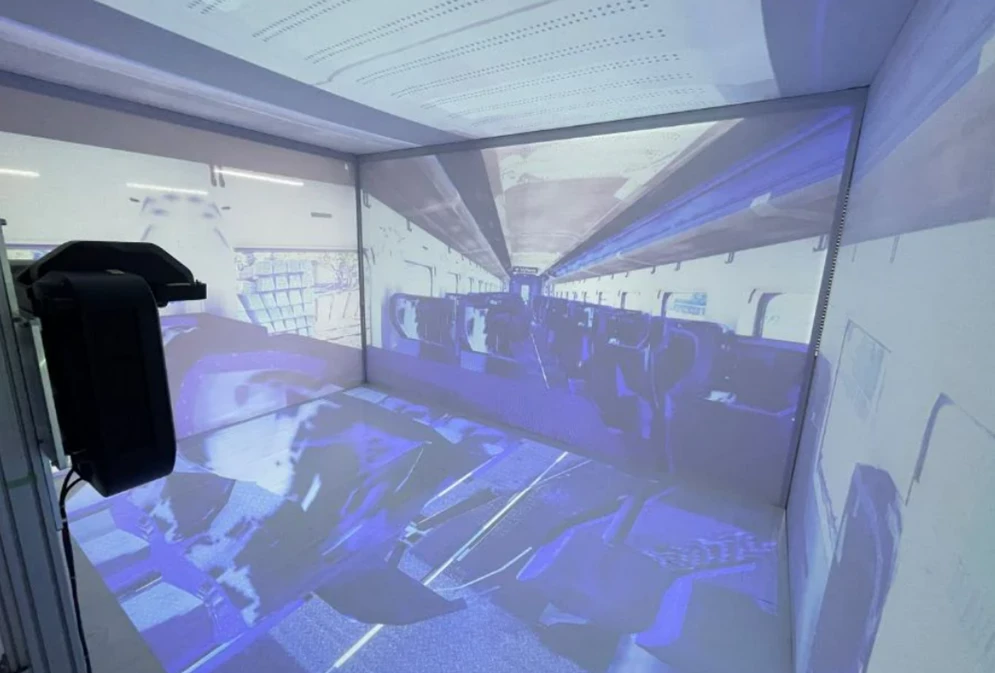The metaverse is not just a buzzword for social media or gaming. It is a powerful tool for business innovation, especially in the railway industry. In this article, you will learn how Hitachi Rail is leveraging the metaverse and AI to create new frontiers for its business, people and customers.
Hitachi Rail’s Mission and Vision
Hitachi Rail is a global leader in mobility solutions, delivering superior and original technology and products for railway projects around the world. To achieve this, Hitachi Rail constantly seeks innovative solutions that meet the needs of its customers and help its people shape the future of mobility. One of the key innovations that Hitachi Rail is working on is the metaverse, a virtual space that simulates the real world.
Meet the Man Behind the Railway Metaverse
Katsuyuki Nakamura is the Department Manager of the Intelligent Vision Research Department, Advanced Artificial Intelligence Innovation Centre, at Hitachi, Ltd. He is the driving force behind Hitachi Rail’s metaverse project, which aims to revolutionise railway maintenance and design using metaverse technologies and artificial intelligence (AI).
How the Metaverse and AI Enhance Railway Maintenance
Hitachi Rail has developed a railway maintenance technology that uses AI algorithms to detect abnormalities in train tracks. The technology works as follows:
A train equipped with a front-facing camera captures images of the tracks during normal runs. This is the data collection phase.
The AI algorithms compare these images with those captured during subsequent runs to detect anomalies, such as corrosion of components or emissions.
The detected abnormalities are then reproduced in the metaverse, where the tracks are color-coded: green means the system is in a normal condition, while red indicates areas with anomalies that require maintenance.
This technology has several advantages, such as:
It enables rapid identification of which tracks need attention or maintenance, allowing engineers to speed up the diagnosis and repair process.
It provides a valuable educational and training tool, allowing workers to gain hands-on experience dealing with various irregular conditions and issues that are hard to simulate in the real world.
This integrated combination of metaverse and AI is an innovative and promising approach to improve railway maintenance, enhancing the safety and reliability of the railway system and delivering benefits for customers.

Interior of a vehicle as reproduced in the metaverse
How the Metaverse and AI Enable Railway Design
The metaverse and AI are not only useful for maintenance. They can also help to design trains and find new solutions, such as for interior design. Thanks to the metaverse, Hitachi Rail’s engineers can:
Change the colours of the seats in a very short time, which can drastically change the atmosphere of the vehicle and serve as a reference when deciding on the interior design.
Remove the seats to expose the frame of the vehicle, allowing them to check the structure and make adjustments.
How the Metaverse and AI Improve Collaboration and Learning
According to Nakamura, the metaverse and AI-based platform will also help accelerate everyday work, the collaboration between different business areas and the training phase. As data replaces paper documents, people might not know where other departments store their data, or even if it exists at all. By organizing data in the metaverse, everyone can benefit from previous experiences, mistakes and achievements. The metaverse is the essence of knowledge sharing and learning.
The metaverse and AI are changing the current era of research and innovation in the railway industry. Hitachi Rail is at the forefront of this change, using the metaverse and AI to create new frontiers for its business, people and customers.
By doing so, Hitachi Rail is fulfilling its mission to deliver superior and original technology and products for mobility projects around the world.


